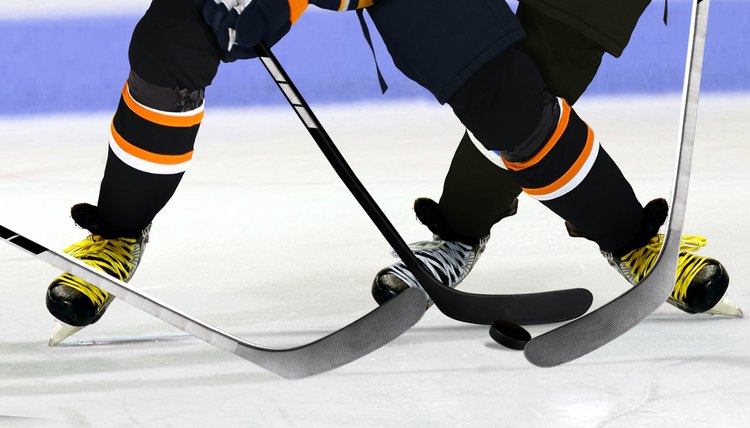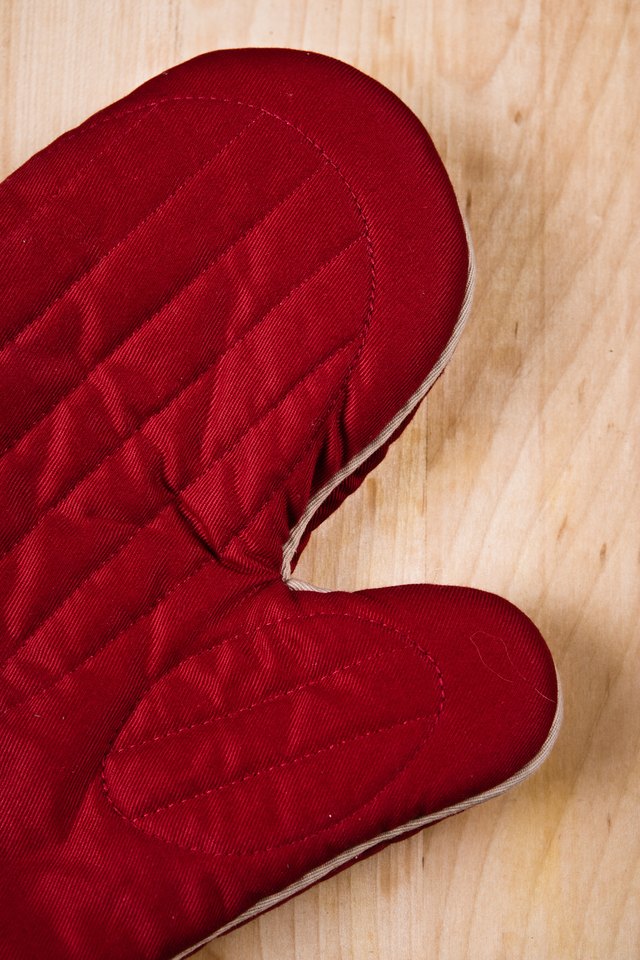How to Recurve a Composite Hockey Stick

For most hockey players, choosing the proper stick is a personal decision. Selecting the right height, weight and flexibility can be the difference between a game-winning goal and missing the net completely. One of the most important factors when choosing a hockey stick is the curve of its blade. This curve essentially forms a pocket that cradles the puck, allowing it to be carried, passed or shot more easily. By changing the curve of the blade, you can easily change the trajectory, speed and spin with which the puck is released.
Preparation
Turn the stove top element to medium-high.
Wipe the stick blade clean of any dust or debris using a clean, dry cloth.
Fill the large bowl with enough room-temperature water to fully submerge the stick blade.
Curving the Blade
Hold the stick blade approximately 8 to 10 inches over the stove top element and slowly move it back and forth, covering the full span from heel to toe. Without stopping, expose both sides of the blade to the heat as evenly as possible. Do this for approximately 60 seconds.

razihusin/iStock/Getty Images
Put the oven mitt on your dominant hand and gently apply pressure to the blade in the desired direction, gripping the shaft of the stick with your other hand. If the blade becomes stiff again, simply run it over the heat for another 60 seconds.
Continue reheating and gently curving the blade until you have reached your desired curve. Be sure to measure your curve to ensure it is legal for play. If a straight line is drawn from the heel of the stick to the toe, that line cannot be more than 3/4 inch from any point on the blade.
A good rule of thumb is to lay your stick flat on the floor and stand a dime on its edge beneath the blade. If it fits through at any point without making contact, it is probably illegal.
Submerge the blade of the stick in water for one to two minutes to harden the outer surface. Allow the stick to cool at least 12 hours before taping it for game play.
Tips
The more curve there is in the blade of a stick, the easier it is to lift the puck off of the ice. For this reason, forwards tend to prefer a sharper curve. This allows them to target the top part of the net from a relatively close distance.
Defensemen often prefer a flatter blade becasue it allows for greater power, which is more useful for a booming slapshot from the blueline.
Warnings
The stick blade will be very hot immediately after heating. It is best to use a high-quality oven-mitt and to be very careful when handling the heated blade.
Many stick manufacturers consider curving the blade an alteration of the products' original design. Because of this, curving the blade may nullify any guarantees or warranties on the stick.
While most sticks can be adjusted slightly, it is not advisable to attempt changing a left-handed stick to a right-handed stick or vice-versa. Executing such a major structural change can easily lead to a weakened stick.
References
Writer Bio
A freelance writer since 2010, Ross Read is a Can-Fit Pro-certified Personal Training Specialist (PTS) with almost a decade of professional experience. He received his Bachelor of Business Administration with a major in marketing from St. Francis Xavier University, where he was also a member of the varsity men's lacrosse team.
